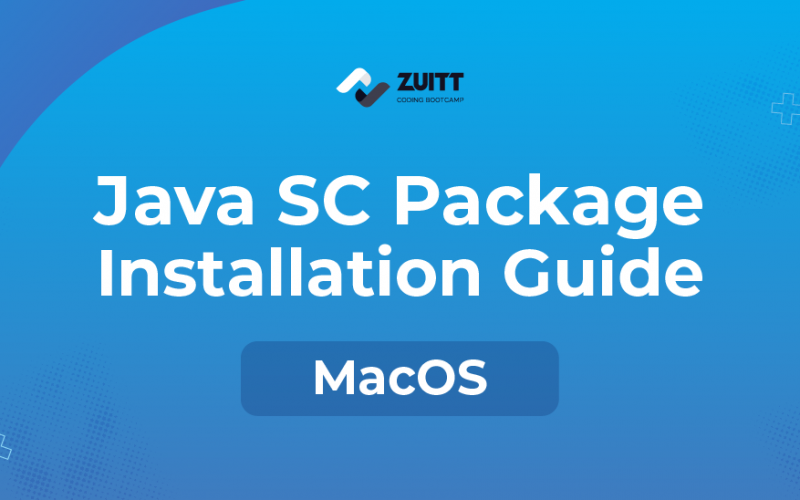Note:
- If the version number installed in your device is lower than the version provided in the screenshots, follow the steps below to install the updated version of the applications.
- If an updated version of the above provided applications are already installed in your device, the following instructions will still work with minor differences in the version of the app you’re shown in the output which should have no impact during the course of the bootcamp.
Allow Apps from the App Store and Identified Developers
Reference: https://support.apple.com/en-us/HT202491
To allow installation from the App Store and Identified Developers on your Mac, choose Apple Menu > System Settings, click Privacy & Security, then scroll down to the Security. Select App Store and identified developers under the header “Allow apps downloaded from.”
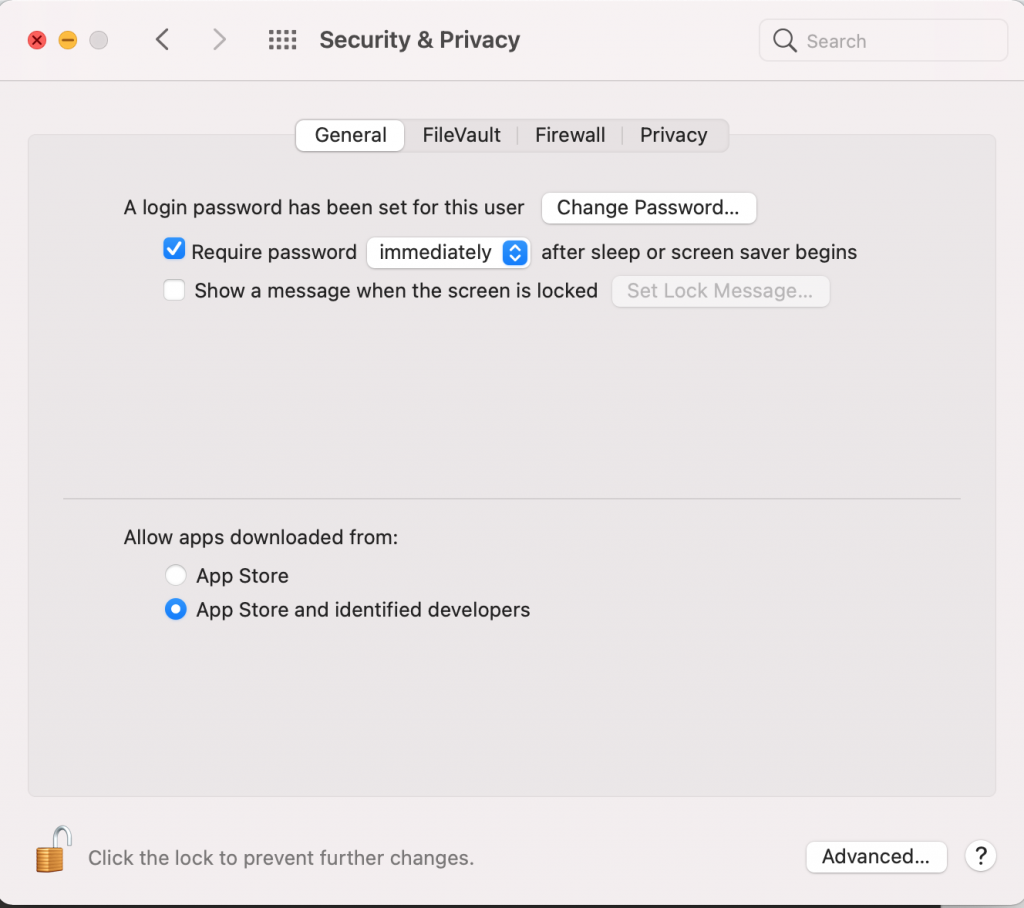
Homebrew
Click the Spotlight Search located at the top-right of your screen (the magnifying glass icon at the right side of the current time) then search and open a program named Terminal.
Inside the Terminal program, copy-paste the code below then press Enter.
| /bin/bash -c “$(curl -fsSL https://raw.githubusercontent.com/Homebrew/install/master/install.sh)” |

Press Enter and type your password to continue then wait for the install process to finish.
The executed command will install utility tools (specifically for MacOS devices) that will be used in the bootcamp.


Sample screenshots of the outputs in the Terminal while the command is running.

To verify that the installation process is successful, type the following in the Terminal:
| brew -v |
It should output the following:

Git was also installed along the way. To confirm, type git –version and the output should be like this:

If the version number is higher than in the screenshot, it means that it is more updated.
After verifying the success of the install process, keep the Terminal in the dock by right-clicking the program in the dock and choosing the Keep in Dock option.

Google Chrome
Open a web browser (initially Safari) and go to https://google.com/chrome. On the page, click the Download Chrome button.
Note: If you have an iMac or Macbook with the Apple Silicon (M1 or later) chip, click the Mac with Apple chip button. Otherwise, click the Mac with Intel chip button.
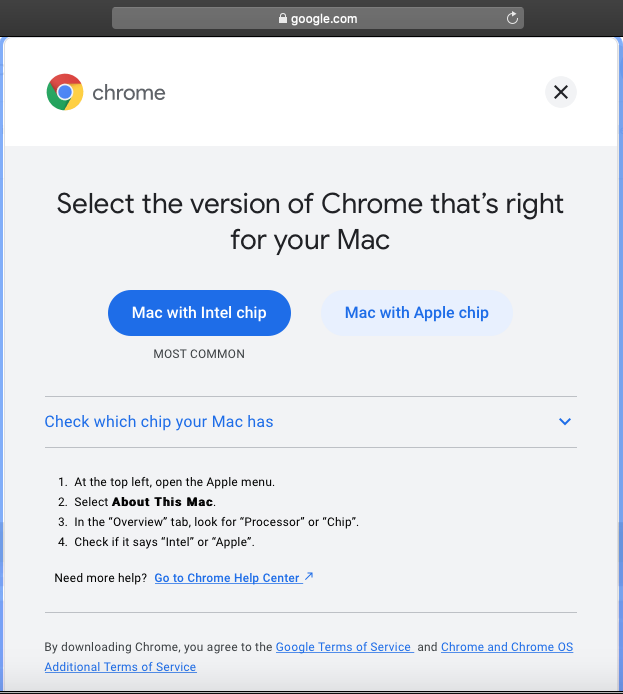
After downloading, open the DMG file.
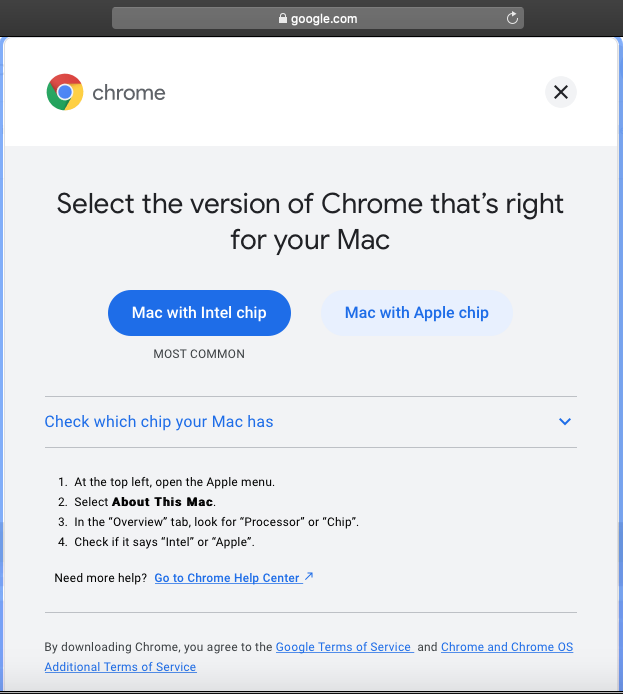
After opening the DMG file, drag the Google Chrome icon to your Applications.

After that, wait for the transfer to finish.

Click the Spotlight Search located at the top-right of your screen (the magnifying glass icon at the right side of the current time) then search and open Google Chrome.
Google Chrome should open normally.

Keep the Google Chrome in the dock by right-clicking the program in the dock and choosing the Keep in Dock option.
IntelliJ
Go to the official download page for MacOS and download the executable file for the community edition.

Run the file, drag and drop the IntelliJ icon in the applications folder and wait for the installation to finish.

After installation, open intelliJ and if it opens successfully then it has been installed properly. You may also keep the IntelliJ in the dock by right-clicking the program and choosing the Keep in Dock option.

XAMPP
Open the downloaded installer.

If the link to the installer in the download link section provided above does not work or the same version is not found, you may download the installer here.
The link provided above will redirect you to a list of installers. Press Ctrl + F on your keyboard to open the find in page menu.
Look for the installer (xampp-osx-8.1.17-0-installer.dmg) with the exact same name as provided in the screenshot above.
Click the link to download the installer.
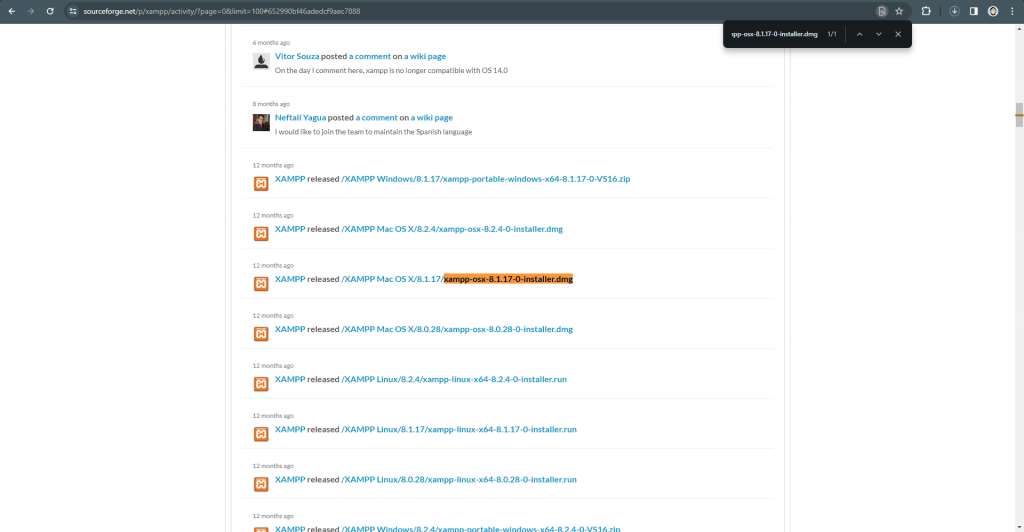
Double-click the XAMPP icon.

Click the Open button to proceed.

Enter your current account’s password when prompted. Then click the Next button to proceed.

Click the Next button to proceed.

Click the Next button to proceed.

Uncheck the Learn more option then click the Next button to proceed.

Click the Next button to proceed.

Wait for the installation to finish.

Leave the Launch XAMPP checked and click the Finish button

The XAMPP should open. Go to the Manage Servers tab. Try to start the MySQL Database and Apache Web Server. It should start normally.

Open Google Chrome and go to localhost/phpmyadmin to confirm that the phpMyAdmin web program works properly.
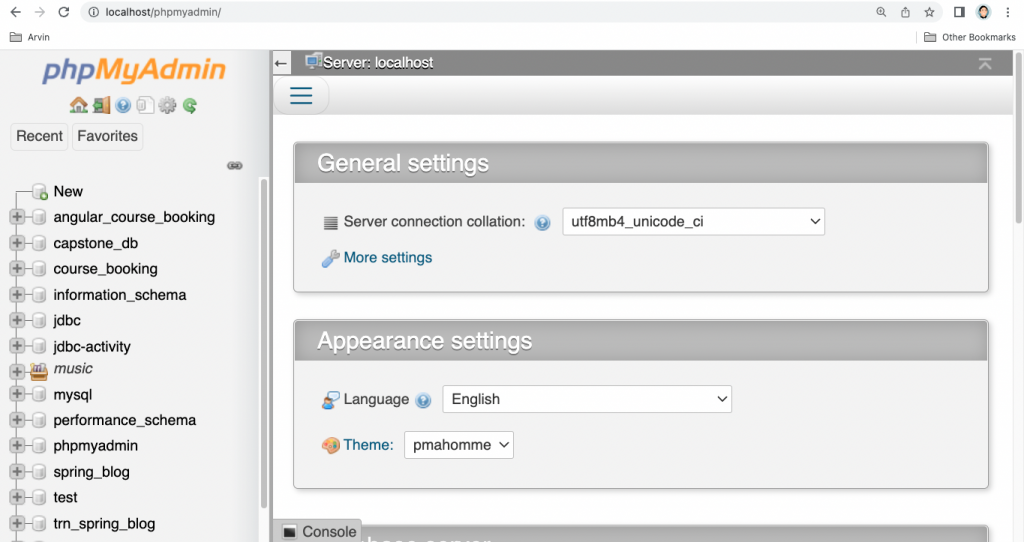
To allow use of terminal commands from XAMPP, open a Terminal and execute the command below.
sudo nano ~/.bash_profile Then, add the following lines after the last line (or first line if there is no content yet) inside the opened file editor.
export PATH=/Applications/XAMPP/xamppfiles/bin:$PATH Press Ctrl+O to save the file then Ctrl+X to exit the editor. Then, execute the command below to refresh Terminal settings.
source ~/.bash_profile Execute the following commands in the Terminal to determine that XAMPP has been configured properly for Terminal use:
which mysql
mysql --version The output of these commands should be the following:

If you’ve stumbled upon this blog post and aren’t a bootcamper, you can begin your bootcamp journey with Zuitt by clicking this link:

